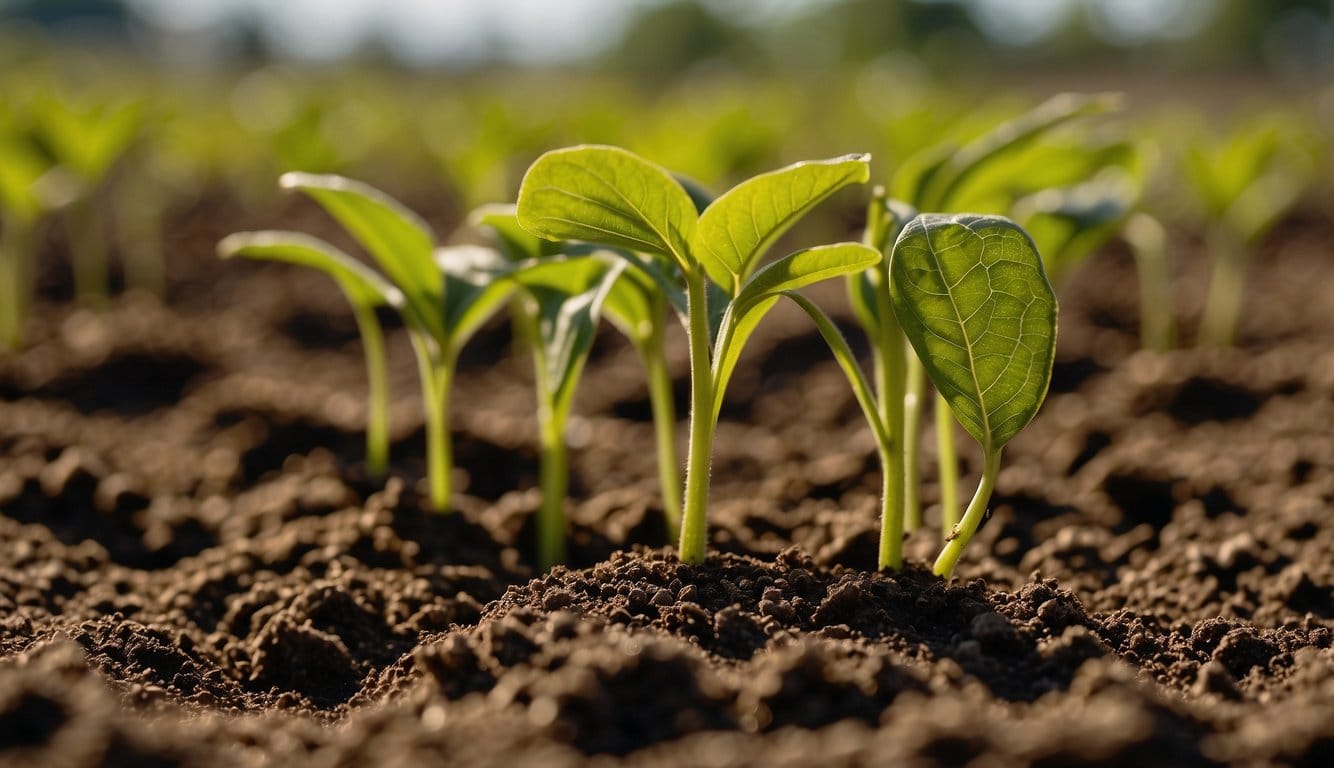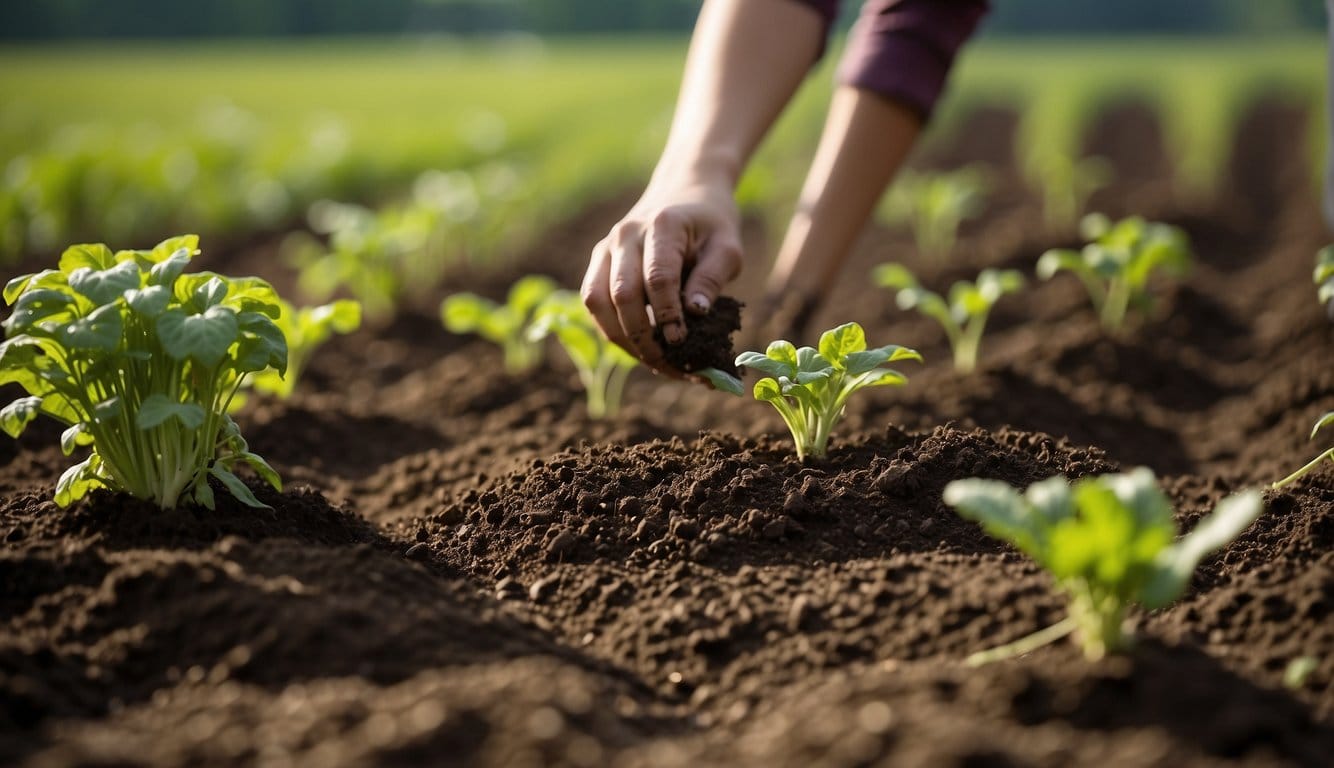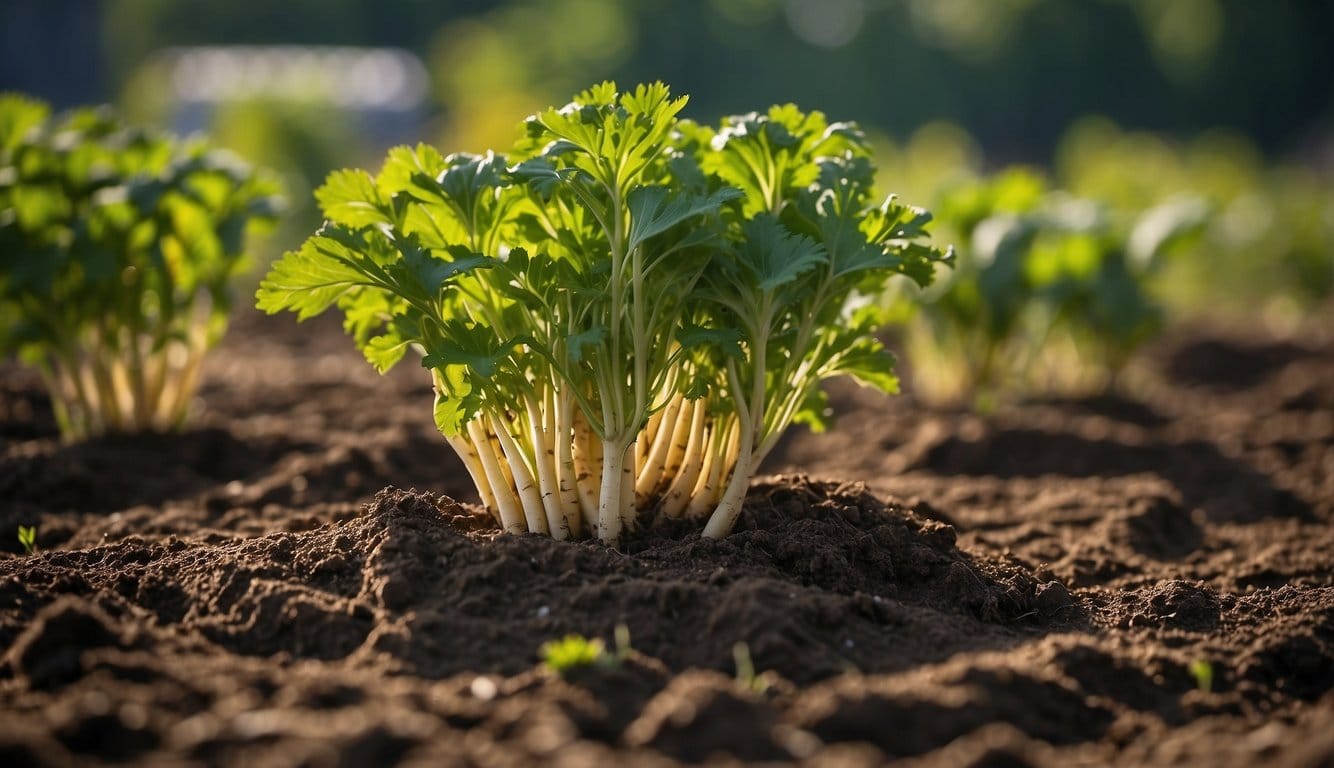How to Grow Parsnip
Parsnips are biennials, usually grown as annuals. They boast a sweet, nutty flavor that intensifies after the first frost of the year. Often considered a staple in winter dishes, they are not only nutritious but also versatile in the kitchen.

Growing parsnips (Pastinaca sativa), a root vegetable closely related to carrots and parsley, can be rewarding for the home gardener.
To achieve a successful parsnip crop, you need to attend to the plant's specific needs.
Choosing a sunny site with well-draining soil is crucial for developing long, straight roots.
Ensuring the ground is free from rocks and weeds and enriching the soil with organic matter such as compost or aged manure will create optimal growing conditions.

Despite their long growing season, with attention to proper sowing and routine care, parsnips can be an excellent addition to your garden lineup.
Key Takeaways
- Parsnips require well-drained soil and ample sunlight.
- Sow seeds directly into the ground in early spring.
- Practice routine care, including weeding and soil monitoring.
Understanding Parsnips
In cultivating parsnips, you interact with a vegetable with a rich heritage and unique botanical nuances.
Botanical Profile
Parsnips, Pastinaca sativa, are long, tapered root vegetables resembling carrots. They differ from most vegetables by being biennials. This means they require two growing seasons to complete their biological lifecycle.
Your first season's focus is on growing their edible roots. If left in the ground, they will produce flowers and seeds in their second year.
Origin: Rooted in Eurasian history, parsnips have been a staple in Europe and parts of Asia for centuries. They were highly valued before the potato gained prominence.
Flavor Profile: Your culinary experiences will be enriched by their sweet, nutty flavor with earthy undertones, adding depth to soups, roasts, and stews.
Soil Preference: Parsnips thrive in loamy or sandy soils with a pH between 6 and 7, avoiding extremes of dryness and waterlogging for optimal growth.
Optimal Growing Conditions

Growing parsnips successfully demands attention to the soil they are planted in and the environmental conditions they are exposed to throughout their growth cycle.
Soil Preparation
Your garden soil must be well-drained and fertile for parsnips to thrive. Loose soil allows roots to expand easily, achieving the best results.
Start by tilling the soil 12 to 18 inches deep to ensure proper drainage and remove any rocks or debris.
Integrating a generous amount of compost or well-rotted manure is crucial, as this improves soil structure and adds vital nutrients.
Climate and Sunlight Requirements
Parsnips flourish in a climate where temperatures are between 40°F and 70°F.
They require a site that receives full sun to guarantee adequate warmth and light.
Sowing seeds in early spring or late fall is ideal—particularly for overwintering in milder climates.
Ensure your parsnip plants receive consistent moisture, especially during dry spells, to maintain the necessary humidity in the soil.
Planting Guidelines

Successful planting is pivotal for a fruitful parsnip crop. To maximize your harvest, you'll need to consider the timing and spacing of your parsnip seeds carefully, as well as the sowing technique.
Timing and Spacing
To ensure your parsnips have the best start, timing is crucial.
Start sowing parsnip seeds in early spring, as soon as the soil is workable, to allow them time to mature fully.
If you have mild winters, planting in the fall is also an option for overwintering.
Parsnips are slow to germinate and develop, taking about 120 to 180 days from seed to harvest.
For optimal growth, space your rows 12 inches apart and plant the seeds ½ inch deep.
When the seedlings appear, thin them out to be about 6 inches apart. This ensures that each parsnip has enough room to grow.
Sowing Parsnip Seeds
When planting, select a location that receives full sun.
Sow seeds directly in the garden, spacing them about 1/2 inch apart.
Parsnips prefer a sunny spot and require fertile, deep, and well-drained soil to thrive.
Cover seeds with a thin layer of soil. Keep the area moist until germination, which can take up to 18 days.
It's common to plant a quick-growing crop like radishes between parsnips. This makes the most of your garden space and helps mark the parsnip rows since radishes will sprout quickly and identify the sowing area.
Care and Maintenance

Proper care and maintenance are crucial to growing healthy parsnips. Ensuring that your parsnips receive the right amount of water and nutrients while keeping the area free from weeds and adequately spaced will support a successful harvest.
Watering and Fertilizing
Parsnips require consistent moisture, especially during the early stages of development.
Aim to keep the soil evenly moist but not waterlogged.
It's best to water your parsnips deeply once a week, allowing the soil to dry out slightly between watering sessions.
- Consistent Watering: 1 inch of water per week
- Mulching: Maintain moisture by using organic mulch around the plants
Fertilizing is not typically necessary if you have prepared your garden bed with rich, composted soil.
However, if needed, apply a low-nitrogen fertilizer sparingly, as too much nitrogen can encourage leafy growth at the expense of root development.
- Fertilizer Application: Opt for a balanced 10-10-10 fertilizer, applied sparingly
- Compost: Incorporate compost into the soil before planting for best results
Weeding and Thinning
Weeding is essential to reduce nutrient competition between your parsnips and unwanted plants.
Carefully weed by hand to avoid disturbing the parsnip roots.
- Weeding: Regularly remove weeds from around the plants
Thinning out parsnips is necessary to prevent overcrowding, allowing each root enough space to grow to its full size.
When seedlings are about 2 inches tall, thin them so that they stand 3 to 6 inches apart.
- Initial Thinning: When seedlings are 2 inches tall, thin to 3 inches apart
- Final Thinning: Adjust spacing to 6 inches apart as the plants mature
Remember to handle the young parsnips gently during the thinning process to avoid damaging the fragile roots.
Dealing with Pests and Diseases

Your success in cultivating parsnips hinges on effectively managing pests and diseases. This requires a vigilant approach to both prevention and treatment.
Common Pests
Parsnips can attract various insects, with aphids being among the most common.
These small pests typically cluster on the underside of leaves, siphoning sap and weakening your plants.
To mitigate the damage caused by aphids and other pests:
- Regularly inspect your plants for signs of infestation.
- Employ floating row covers as a physical barrier to protect your parsnips from pest invasions.
- Introduce beneficial insects, like ladybugs, that naturally prey on aphids to maintain a balanced ecosystem.
Utilizing chemicals should be a last resort due to their potential impact on the environment and beneficial species.
When necessary, select pest-specific, environmentally-friendly treatment options.
Disease Prevention
Diseases, if left unchecked, can compromise your entire parsnip crop.
To prevent them:
- Implement crop rotation, which minimizes the risk of soil-borne diseases affecting your parsnips.
- Avoid overhead watering, which can create conditions favorable to disease. Instead, opt for drip or soaker hoses to keep foliage dry.
- Foster healthy soil with good drainage and adequate organic matter to support robust plant growth, essential in disease resistance.
Harvesting and Storing

Successful harvesting and storage ensure you enjoy the full flavor and optimal texture of your homegrown parsnips.
Timing is critical, as parsnips taste sweetens with cold weather, and proper storage can extend their usability throughout the winter.
When to Harvest
- Fall Harvest: Aim to harvest parsnips in the fall, just after the first frost. The cold weather enhances their sweetness by converting starches into sugars.
- Winter Timing: If you live in a region with mild winters, parsnips can be left in the ground and harvested throughout the winter. Mulch heavily to prevent the ground from freezing.
Preserving Flavor and Texture
- Immediate Storage:
- After harvesting, trim the foliage down to about ½ inch.
- Remove soil by gently brushing, not washing, to avoid moisture that can lead to rot.
- Optimal Conditions:
- Temperature: Store at 32°-40°F (0°-4°C), the refrigerator's vegetable crisper drawer is ideal.
- Humidity: Maintain 95% relative humidity. Use a perforated plastic bag to prevent dehydration.
- Long-Term Storage:
- For storage beyond a few weeks, consider a cool, humid environment like a root cellar.
- Parsnips can be overwintered in-ground and covered with a thick layer of straw or leaves to insulate against deep freezes.
Frequently Asked Questions
Here are answers to some common questions about growing parsnips, providing clear guidance for successful cultivation.
What are the best companion plants for parsnips?
Parsnips grow well alongside peas, potatoes, garlic, and other root vegetables. Avoid planting them near carrots or celery, as they can compete for resources or attract similar pests.
What is the step-by-step process for growing parsnips from seeds?
- Prepare your soil by loosening it to a fine tilth and ensuring it's stone-free.
- Sow seeds ½ inch deep, 6 inches apart, in rows 12-18 inches apart.
- Keep the soil moist to aid germination. Thin the seedlings to 3 inches apart once they've sprouted.
- Continue to water and weed your parsnips throughout their growth period.
What are the optimal conditions for growing parsnips in a raised bed?
In a raised bed, ensure good drainage and a soil mix rich in organic matter. Ideal conditions are soil pH levels between 6 and 7 and a location that receives full sun to partial shade.
Can parsnips be successfully planted in the fall, and what are the considerations?
Yes, planting parsnips in the fall allows them to overwinter and be harvested in early spring. Using mulch ensures the soil does not freeze completely.
Remember, parsnips require a long growing season. So, fall planting might be best in milder climates.


